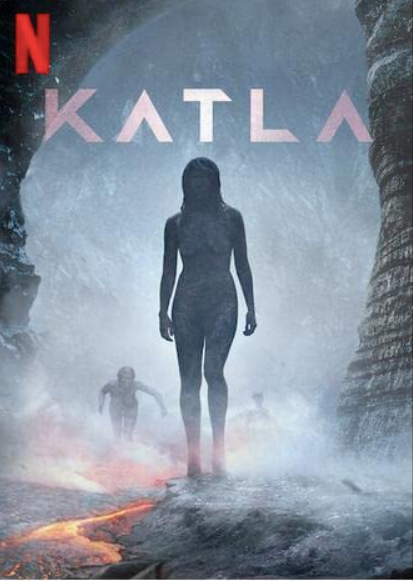
My wife and I binged all eight episodes of Katla, which debuted on Netflix just a few days ago. It's Icelandic, and billed as mystery, drama, and science fiction. I'd say it's definitely Nordic Noir -- which takes care of mystery and drama -- but more science fantasy than science fiction, in case that matters to you.
It takes place in Vik, a real "remote seafront village in south Iceland" (according to Google), which "sits in the shadow" (also from Google) of the nearby volcano Katla (also real). What's not real, and here is where the story begins, is that after an eruption, deceased residents start coming back to life. These include Ása (who disappeared a year ago, sister of protagonist Grima) and Mikael (who was killed three years ago, eight-year-old son of volcanist Darri). Pretty soon, people begin appearing not when their dopplegangers are dead, but just when they have a terminal illness, or are out of town, say, in Sweden.
It's pretty clear from the outset that the volcanic eruption is in some way responsible for this. But how? We learn, in an episode near the end, that a meteor from another solar system landed in the volcano a millennium or so ago. So now I'm thinking we've got a late and lamented Debris kind of effect going on here. But that's never really spelled out, either.
In the end, Grima and Darri come to realize that the dopplegangers came forth to help the relatives in Vik repair their lives and their relationships. Mikael, though he's psychotic, helps Darri and his wife get back together. Grima gets not only her sister back for a while, but another version of herself, and this helps her repair her relationship with her husband. But how? We're given no clue about this, and that's why I say Katla is more correctly characterized as science fantasy than science fiction.
But that's ok. It's the relationships among the affected people, not the science, that is of most interest in this compelling drama, and I'm definitely onboard for seeing another season.

No comments:
Post a Comment